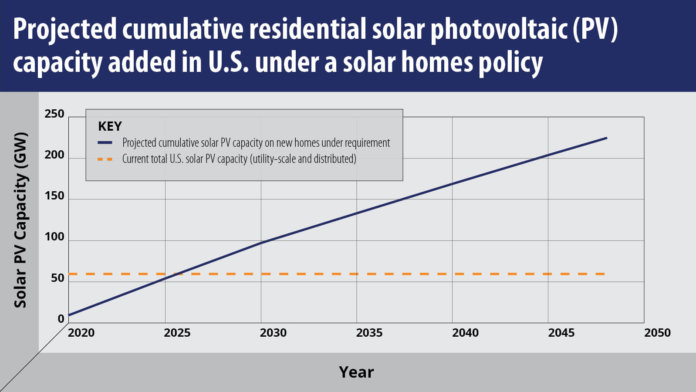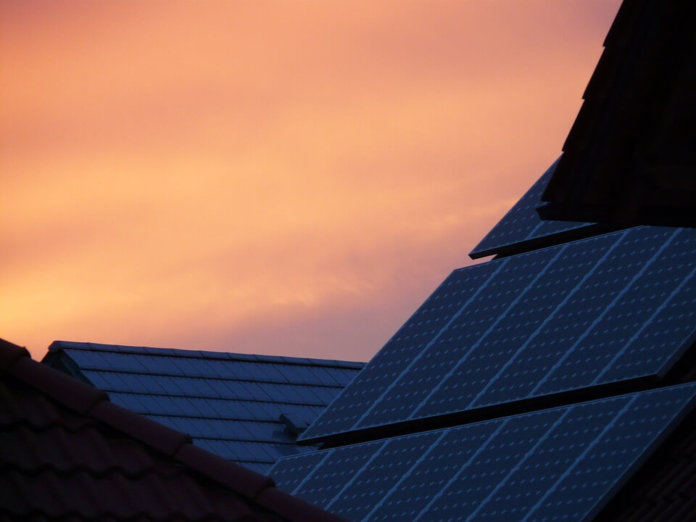What would happen if builders installed solar panels on all new U.S. homes starting in 2020? According to a new report from Environment America Research & Policy Center, the country could more than triple its current solar capacity by 2045.
Specifically, the resulting 203 GW of new residential solar PV capacity would represent 3.5 times the 58 GW of solar capacity currently installed in the entire U.S., the report estimates. Further, such a policy could also cut current annual carbon-dioxide (CO2) emissions from electricity generation by more than 9% by 2045, the report says.
According to Bret Fanshaw, director of the Go Solar Campaign at Environment America Research & Policy Center, “every home and structure built without solar is a missed opportunity.”
“Generating renewable energy from our rooftops helps homeowners and their communities, reducing both electric bills and pollution,” Fanshaw continues.

In May, the California Energy Commission approved a new policy to require nearly all new homes built in the state to incorporate solar beginning in January 2020. The commission estimates that this policy, coupled with energy efficiency improvements, could save homeowners $19,000 in energy and maintenance costs over the course of a typical 30-year mortgage. Later this week, the California Building Standards Commission will meet to review the proposal.
“The new National Climate Assessment makes it clear that we need to stop burning fossil fuels as soon as possible, and solar energy is key to that transition,” comments Abi Bradford, policy analyst and report co-author with Frontier Group. “Installing solar panels on all new homes could add more solar energy capacity than the entire country currently has installed – including utility-scale installations – in just six years from 2020 to 2026.”
If the nationwide policy were adopted, according to the report, the U.S.’ fastest-growing states would add the most solar energy, with Texas, Florida, North Carolina, Georgia and Arizona ranked at the top.
The report also provides state-by-state estimates for the potential reductions in CO2 emissions. For example, by putting solar panels on all new homes in 2020-2045, Texas could expand its existing solar capacity 10-fold, as well as reduce CO2 emissions from energy use 3.2% from 2015 levels by 2045. In Florida, the state could grow its existing solar capacity more than 13-fold and cut CO2 emissions from energy use by 7.3%.
“We can have solar-powered communities right now and for years to come with smart policy choices,” notes Fanshaw. “And the most efficient time to install solar panels is when workers are already on the roof.”
The full report can be found here.




